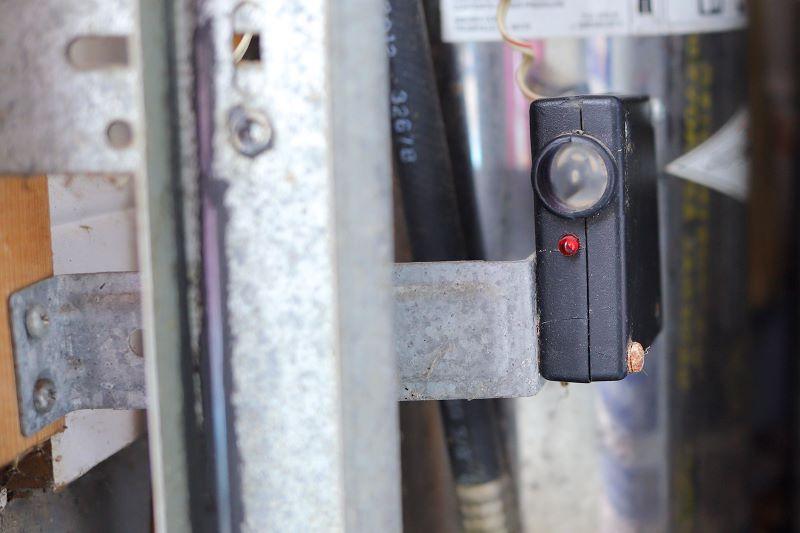Dealing with a malfunctioning garage door opener sensor can be a frustrating experience, especially when it disrupts your daily routine. If you’re encountering issues with your garage door opener sensor not working as it should, you’re not alone. In this comprehensive guide, we’ll explore the common reasons behind a “Garage Door Opener Sensor Not Working” scenario and provide practical solutions to address the issue effectively.

Understanding: Garage Door Opener Sensor Not Working
Garage door opener sensors, also known as safety sensors or photoelectric sensors, play a crucial role in ensuring the safe operation of your garage door. Located near the bottom of the garage door tracks, these sensors emit an invisible beam of light that detects any obstructions in the door’s path. If the beam is interrupted by an object or person, the sensors signal the opener to stop or reverse the door’s movement, preventing accidents or damage.
Common Reasons: Garage Door Opener Sensor Not Working
Several factors can contribute to a garage door opener sensor not working correctly. Here are some of the most common reasons:
- Misalignment: Over time, garage door sensors may become misaligned due to accidental bumps, vibrations, or changes in temperature. Misalignment can prevent the sensors from properly detecting the beam of light, leading to malfunction.
- Obstruction: Dust, dirt, spider webs, or other debris can accumulate on the sensor lenses, obstructing the beam of light and causing the sensors to fail.
- Wiring Issues: Loose or damaged wiring connections between the sensors and the opener can disrupt the flow of electricity, preventing the sensors from transmitting signals effectively.
- Sunlight Interference: Direct sunlight shining directly onto the sensor lenses can interfere with the beam of light, causing false readings or triggering the sensors to malfunction.
- Electrical Problems: Faulty circuitry, a malfunctioning control board, or power surges can also cause sensor issues, requiring professional diagnosis and repair.
Troubleshooting Steps
To diagnose and resolve a garage door opener sensor not working, follow these troubleshooting steps:
- Inspect Sensor Alignment: Check that the sensors are properly aligned and facing each other. Adjust their position if necessary to ensure a clear line of sight between the two sensors.
- Clean Sensor Lenses: Use a soft, dry cloth to gently clean the sensor lenses and remove any dirt, debris, or spider webs that may be blocking the beam of light.
- Check Wiring Connections: Inspect the wiring connections between the sensors and the opener for any signs of damage or looseness. Tighten or replace any damaged wires as needed.
- Test Sensor Functionality: Manually interrupt the beam of light between the sensors by placing an object in its path. If the sensors are working correctly, the opener should stop or reverse the door’s movement.
- Shade Sensor Lenses: If sunlight is interfering with the sensors, install shades or covers to block direct sunlight from shining onto the sensor lenses.
- Reset Opener: Try resetting the garage door opener by unplugging it from the power source for a few minutes, then plugging it back in to see if the sensor issue resolves.
Read too: The Complete Guide to Tighten Chain On Garage Door Opener for Smooth Operation
Seeking Professional Assistance
If you’ve exhausted all troubleshooting steps and the sensor issue persists, it may be time to seek professional assistance. A qualified garage door technician can diagnose and repair more complex sensor problems, such as electrical issues or damaged components within the opener.
Conclusion
A garage door opener sensor not working can pose a safety risk and inconvenience for homeowners. By understanding the common reasons behind sensor malfunction and following the troubleshooting steps outlined in this guide, you can identify and resolve the issue effectively. Whether it’s aligning the sensors, cleaning the lenses, or checking wiring connections, taking proactive measures to maintain your garage door opener sensors ensures the continued safety and functionality of your garage door system.
Don’t let a malfunctioning sensor compromise the safety of your home – address the issue promptly and enjoy reliable operation of your garage door opener once again.



Leave a Reply